Matador Network's Blog, page 1086
May 30, 2019
What to do in Khon Kaen, Thailand
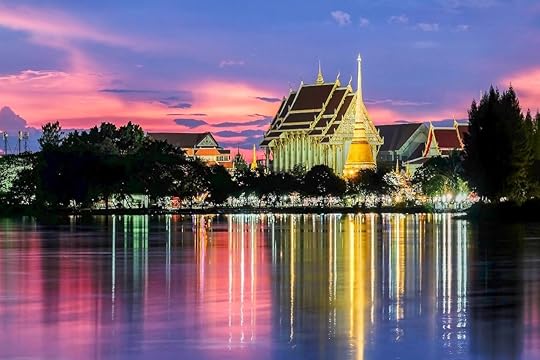
The country of Thailand says it received 38 million visitors in 2018, setting a new record for annual arrivals. That said, less-visited areas remain. One of those is Khon Kaen in the northwest, which is still a city that few Western tourists have explored. It appears, though, that the winds may be shifting.
Khon Kaen has experienced a plethora of new developments in the past few years and is poised to welcome all the foodies, shoppers, and nightlife hounds that flock to Thailand’s major cities — without, as of yet, all the crowds.
Khon Kaen is also a perfect weekend trip from Bangkok or Chiang Mai that won’t break the bank. If you’re looking for a culturally rich and friendly city, Khon Kaen is a must when you’re in Thailand. Here’s how to get the most out of your time.
Khon Kaen starts to welcome visitors.
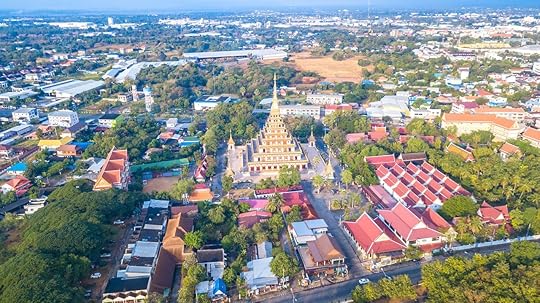
Photo: apiguide/Shutterstock
Khon Kaen is located about 300 miles northeast of Bangkok. Air travel is the easiest way to get there, with flights from the capital to Khon Kaen as cheap as $35. Vientiane, the capital of Laos, is only three hours away by car if your travels plan to take you further into Southeast Asia. A new light rail system will make arrival in Khon Kaen easier as well.
Downtown Khon Kaen’s recent surge of development makes it easier to find your footing as a visitor. Until a few years ago there were no luxury hotels or apartments, the airport only had two gates, and a menu in English was a hard thing to come by. Travelers found themselves relegated to a collection of hostels and guest houses, and as a result, the Bangkok crowds never spilled over.
But since the opening of CentralPlaza mall in 2015, the surrounding area has seen a boost in high-end lodging and apartment high rises. A wide range of restaurants, bars, and shops have also opened within walking distance of those hotels and the mall, creating a well-rounded circuit for locals and visitors that extends into the evening hours.
Khon Kaen has a nightlife that, while certainly no full moon party, offers a few clubs and lounges popular with university students and the younger crowd. Though the nightlife isn’t the same as in Bangkok or Pattaya, the vibe here feels more laid-back and genuine.
Khon Kaen throws the best Songkran in Thailand.
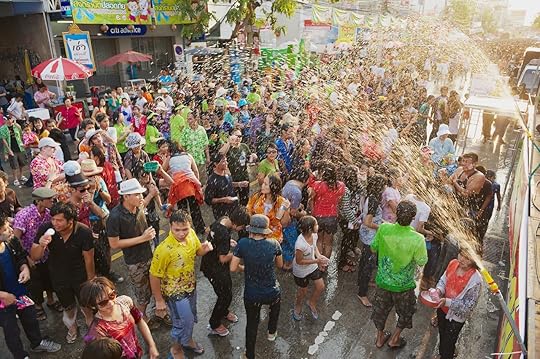
Photo: Dmitry Chulov/Shutterstock
Anywhere in Thailand, Songkran is an experience like no other, but Khon Kaen takes it to a new level. The holiday, which commemorates the Thai New Year, is also known as the water festival — something you’ll learn quite literally and very quickly.
Songkran in Khon Kaen is a little different than in some of the larger cities, where you might feel a bit lost if you don’t know specifically where to go to celebrate. In Khon Kaen, it’s all concentrated primarily in two areas. In the surrounding areas of Central Plaza, the streets are shut down to accommodate multiple concerts and street vendors.
While the Central Plaza is worth a visit, the best way to experience Songkran here is to head to the streets surrounding the Wat Nong Wang temple along Klang Muang Road at night. You’ll find traffic backed up in every direction, so don’t plan to drive in with any efficiency, but what you want to do is to hitch a ride in the back of a truck or open tuk-tuk.
People pile into the back of trucks with trash cans full of water accompanied by squirt guns, which they liberally use to splash oncomers in every direction. You’ll creep along in your truck at a snail’s pace sharing drinks, dancing, and splashing everyone with water. It’s one giant party and everyone is in on the action, from little kids to the 80-year-old grandma.
The Wat Nong Wang temple is a sight even beyond Songkran, a stunning nine-story royal temple located on Klong Muang Road. You can climb to the top and experience 360-degree views of the city, seeing Buddhist art and murals as you walk up to each floor. On the first floor, you’ll see Thai art, various historical displays, and experience a little Thai culture as you watch others give gifts called alms to the monks. You can also purchase small boxes filled with gifts and have the monks bless you if you wish to partake.
Khon Kaen is a university town — with a strong coffee culture.
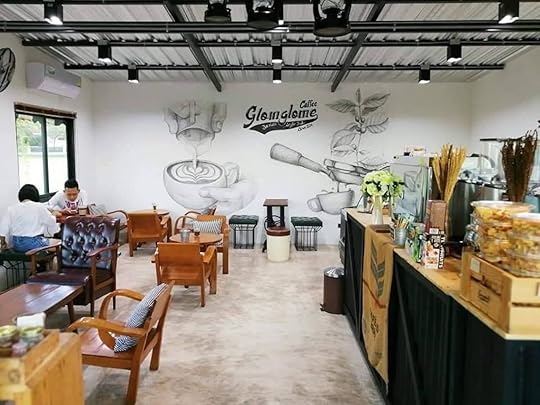
Photo: กลมกล่อม-GlomGlome/Facebook
The growth of a strong coffee culture has accompanied the rapid development of Khon Kaen. You can find Starbucks and the popular Thai chain, Cafe Amazon, but a plethora of mom and pop coffee shops have also recently opened. Cafe GlomGlome, a trendy coffee shop which recently opened across from Khon Kaen University, offers a variety of sweets and food to accompany your coffee. Many of the university students head over to study or visit the fat cat that roams the cafe.
The university is also a destination in itself. Khon Kaen University is the heartbeat of the city and the first university established in northeastern Thailand. It’s regarded as one of the top universities in the country. The campus is gorgeous, set with a large lake out front and a running track containing various exercise equipment surrounding it, making for a great morning workout as its open to the public.
As you walk around the campus you’ll take in art, learn a little about Thai history, and be surrounded by lush green trees along the way. Khon Kaen University also has a variety of free events open to the public, such as concerts and charity events.
The night markets rival Thailand’s bigger cities.

Photo: sarawuth wannasathit/Shutterstock
Like other parts of southeast Asia, Khon Kaen has a variety of night markets both big and small. Ton Tann, only a few minutes away from CentralPlaza Mall, is the largest and most popular. What sets Ton Tann apart is the variety of vendors, ranging from the local guy selling fried ants to less challenging options like pork fried rice.
An array of other vendors at Ton Tann sell everything from clothing and souvenirs to local art. You’ll find local wares and souvenirs, rock yourself through a diverse crowd of shoppers and perusers, and try interesting new foods. This is the perfect place in town to get a broad overview of what night markets in Thailand are all about and satisfy both the adventurous and the reserved traveler in your group. On weekends, Ton Tann hosts live bands and other family-friendly events.
The night market near Kaen Nakhon Lake is another unique experience. Here you’ll find a variety of exotic fruits, live fish, and delicious coconut shakes. There aren’t many places to sit, so be prepared to take your food to go, but many people find a nice spot by the lake to enjoy their food and take in the scenery.
You can get homemade ice cream on a farm.

Photo: Aura Farm – ออร่า ฟาร์ม/Facebook
Situated about 45 minutes outside of Khon Kaen on the way to Udon Thani is Aura Farm. Here, you can have an experience with Thai animals that won’t affect your conscience or draw international scrutiny. A visit here is a great educational activity for kids who can learn about agriculture, including how to make cheese, milk, and ice cream. Kids can also hop aboard the old train display and try out the various swings situated throughout the farm.
Walk around and view the beautiful gardens before stopping into the restaurant and ice cream shop. The shop has a few unique flavors such as banana ice cream with chunks of cheese — another experience that you likely won’t find elsewhere. 

More like this: The nine best rooftop bars in Bangkok
The post Khon Kaen has all the charm of Thailand’s bigger cities — without the tourists appeared first on Matador Network.

Monteverde Cloud Forest biodiversity

Costa Rica is renowned for its rich biodiversity, protected in the national parks that cover an astonishing one-quarter of the country. In addition, the small Central American country boasts a handful private nature reserves, which also protect its precious flora and fauna. The Monteverde Cloud Forest is the best known of these private eco-sanctuaries and is a must-visit for anyone set on experiencing Costa Rica’s natural treasures. The list of things to do and the ways to take in the scenery — whether with a guide on the forest floor, whizzing over the canopy, or in the dark of night — are endless.
Monteverde is a town, a region, and a forest.

Photo: Robin Runck/Shutterstock
Researching Monteverde can be a little confusing. Monteverde, which means “green mountain,” is a small town but also refers to a region including two other towns, Santa Elena and Cerro Plano. It’s difficult to distinguish where one finishes and the next starts on the lush slopes of the Cordillera de Tilarán, or Tilarán mountain range, in north central Costa Rica.
The roughly five-hour bus trip from San Jose terminates at the bus terminal in Santa Elena. If you’re renting a vehicle, try to rent an SUV with four-wheel drive. Some roads are steep and winding, some dirt. Once you’ve arrived Santa Elena, the hilly town is small enough to cover on foot. This is where you’re likely to spend your non-nature time as it has plenty of accommodations, restaurants, banks, bars, markets, and shops.
Located at an altitude above 4,600 feet, this region is much cooler than coastal Costa Rica. Temperatures here range from 59 to 72 degrees, with most rain falling between May and October/November. March sees the least rainfall while October has the most — but almost all months have significant rain. The forests at this elevation are called “cloud forests,” rather than rainforests, as they are almost continuously covered by cloud or mist. Moss covers much of the vegetation due to the dampness.
Visit the Monteverde Cloud Forest Biological Reserve.
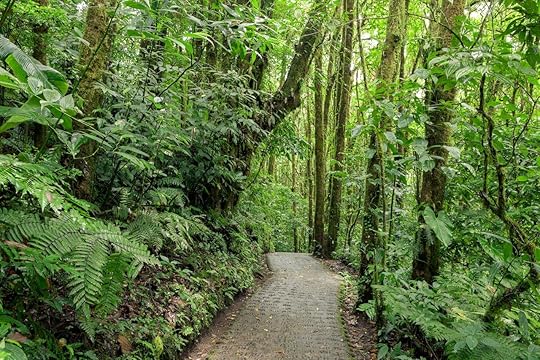
Photo: Juhku/Shutterstock
The community of Monteverde was founded by a group of American Quaker families in the 1950s. In 1972 they purchased, along with wildlife and environmental organizations, an area of 811 acres that became the Monteverde Cloud Forest Biological Reserve — marking the first privately owned reserve in Costa Rica.
The reserve has now grown to nearly 26,000 acres. The area’s abundant biodiversity and serene beauty attracts an estimated 250,000 visitors per year to Monteverde — which, while a lot, is less than the number who visit Costa Rica’s most popular national parks. Even so, tourist numbers are limited daily. Visitor numbers are limited to 450 per day, with only 250 allowed to enter at a time — so be sure to get to the cloud forest early.
Approximately 3.4 miles from Santa Elena, the road winds through Cerro Plano and becomes dirt towards Monteverde. Many tour operators offer pickup from accommodation, but public buses or taxis to the park are available for those traveling solo. You can also opt to stay at one of the many accommodations options between Santa Elena and the park or at the lodge in the park itself.
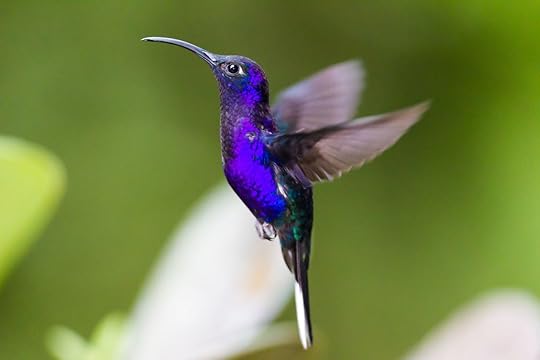
Photo: Andreas Zeitler/Shutterstock
As you wait to enter the reserve, admire the free Hummingbird Gallery where up to 14 species of colorful, tiny hummingbirds between three and five inches long flit around feeders. (We checked, and according to the Audubon Society, hummingbird feeders are okay.) Alternatively, after visiting the reserve, you can hit up the café there, a perfect place to eat and be entertained by nature.
We recommend hiring a guide to learn about the cloud forest and its biodiversity. With around 3,000 species of flora, among them bromeliads and orchids — 34 species of the 500 growing here can only be seen in Monteverde — there’s a lot to learn. Hibiscus and other bright flowering plants add color to the verdant greenery.
Guides can spot animals, birdlife, and insects that are camouflaged in this misty, cloud-covered forest, which most visitors would miss. Guides are also in contact by radio with others throughout the reserve to share sightings of difficult-to-see wildlife, such as the sloth and resplendent quetzal, which has a “near threatened” status according to the International Union for Conservation of Nature.
Explore the Santa Elena Cloud Forest.
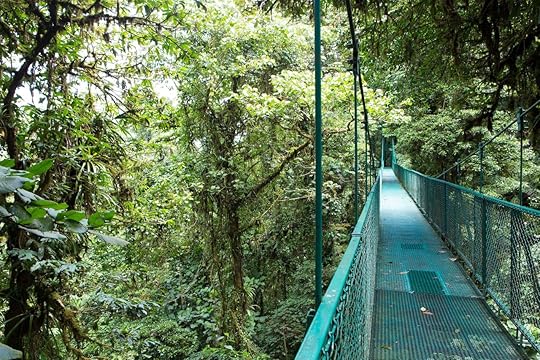
Photo: Watch The World/Shutterstock
Santa Elena Cloud Forest Reserve, or Reserva Bosque Nuboso Santa Elena, comprises 765 acres and sees fewer tourists than the Monteverde Cloud Forest Biological Reserve, giving it a more mystical feel. At 5,250 feet above sea level, it is slightly higher but offers similar biodiversity. Approximately four miles northeast of Santa Elena, the reserve offers scheduled guided tours, self-guided walks, specialized tours focused on birds or plants, and private tours. Reservations at least two days in advance are required for all but the self-guided walks. Volunteering is welcomed here.
Climb a ficus tree.
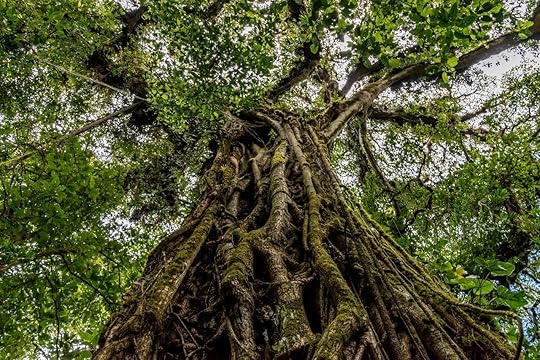
Photo: Jaime Espinosa/Shutterstock
Ficus tree climbing is a fun adventure. Ficus trees, more commonly known as strangler figs, grow around host trees. The poor host trees then rot away, leaving lattice-like vines forming a tunnel leading skywards. A little difficult to locate, these trees are well worth seeing.
The ficus trees I found are not far out of Santa Elena on the road leading to the Monteverde Cloud Forest Biological Reserve. It’s a bit of an uphill walk all the way. Turn left onto the dirt road which leads to Monteverde Cloud Forest Lodge. Just past the Cloud Forest School, walk up the road a little and enter the forest on the left-hand side. (Parking is available if you’ve opted to drive.) There are no signs, but the path is visible, and it’s only a few minutes walk to the trees. The lattice-work the vines have produced is incredible.
If you’d like to climb one, check out Treetop Climbing Monteverde run by Finca Modelo Ecológica situated just over four miles from central Santa Elena. With safety gear provided, you can climb a 131-foot-tall ficus tree to a viewing platform then rappel or climb back down.
Fly over the canopy.

Photo: Wollertz/Shutterstock
Zip-lining was first popularized in Costa Rica. Biologists looking for a way to study dense forest without upsetting the environment came up with the idea. Once they had carried out their research, the idea for using the zip-lines in eco-tourism came about. It’s a perfect way to view the biodiversity without causing harm and have an adventure at the same time.
There are five zip-lining adventure parks around Monteverde. Even if the day is dull and drizzly, it’s worth doing. Flying through the mist, alone and Superman-style, above the green, pompom-like forest canopy is like nothing else.
100% Aventura in Parque de Aventura boasts the longest zip-line in Latin America at just under a mile and has 11 other cables traveling through the treetops along with bridges to walk amongst the canopy. Don’t panic if you don’t think you can get the hang of stopping yourself at the end of your exhilarating ride; most lines automatically brake. 100% Aventura also lays claim to having the biggest “Tarzan swing” in Costa Rica. Jump from 295 feet and fall 148 feet. You may scream the entire time. Safety is a high priority, with detailed instructions offered in English prior to starting.
For those less adventurous, Sky Adventures Monteverde Park has gondolas to enjoy the views. Bookings are essential at most facilities.
You’ll see colorful frogs.

Photo: Ranario Monteverde/Facebook
The best place to see Costa Rica’s frogs up close and get great photographs is the Monteverde Frog Pond since some of the frogs are less than an inch long. Tickets allow visitors to go during the day and again at night. The best time to visit is late afternoon/early evening when both the daytime and nocturnal frogs are active and more vocal — although it can get busy then.
Bilingual guides will enthrall with everything you ever wanted to know about these amphibians. With amazingly colorful red-eyed tree frogs, poison dart frogs, cane toads, and crowned frogs amongst some of the species found in terrariums here, the visit is a highlight of the Monteverde area.
Want to see butterflies and insects up close?
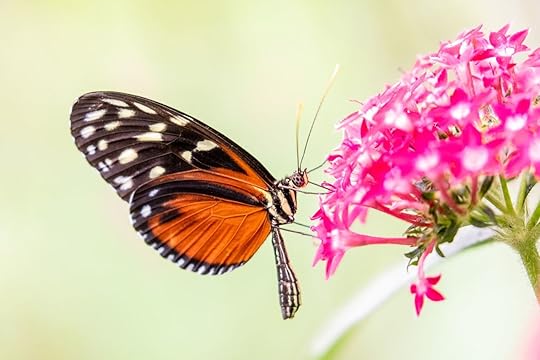
Photo: Serge Goujon/Shutterstock
You can see butterflies and insects at the Frog Pond, but the Monteverde Butterfly Garden is really the place to experience them. Eighteen percent of the world’s butterflies, and 90 percent of Central American species, are found in Costa Rica. That’s around 3,000 species of butterflies and moths.
Between Santa Elena and Monteverde town is Cerro Plano and the Monteverde Butterfly Gardens, Jardin de Mariposas. It’s around a 20-minute uphill walk from Santa Elena. Four gardens feature different habitats with around 30 species of butterflies. Enthusiastic English-speaking guides are very informative. See the blue morpho, the male of which is an iridescent blue with a wingspan of eight inches, and the owl butterfly, with an “owl eyes” pattern on its brown wings. Marvel at butterflies with transparent wings, which make it easier for them to hide from predators, as well as striped, spotted, and multi-colored butterflies — all natural works of art.
Costa Rica has 100,000 species of insects. The Monteverde Butterfly Garden is home to 20 or so species of insects along with leaf-cutter ants. Also found in this three-acre complex are coatis, agoutis, and capuchin monkeys, and the odd armadillo pops in.
Explore the forest at night.

Photo: frozenblizzard/Shutterstock
It’s amazing how much can be seen at night in the forest. If you’re staying in Santa Elena, check out the wildlife refuge, only around a seven-minute drive from the center of town. Once a farm, today it is a 74-acre protected area. As with other nature parks in the area, the refuge runs two two-hour night tours, starting at 6:00 PM or 8:00 PM, limited to groups of eight.
With a guide and a flashlight, this adventure can be incredibly interesting, spotting and learning about the flora, and animals and insects that move around the forest at night. You might spot nocturnal olingo, one of the rarest raccoons, as well as sloths and birds sleeping in trees. You may also encounter tiny frogs and viper snakes, or, amongst the insects, rhinoceros beetles, tarantulas, dead leaf mimicking katydids, stick insects, and leafcutter ants.
And one point in your night tour, you’ll turn off your flashlights to see the glow of luminescent fungi — and to stop and listen to the noises of insects and the wind in the trees. Like many other experiences in Monteverde, the moment is magical. 

More like this: All the Costa Rica national parks and reserves you need to visit
The post How to experience the incredible biodiversity of Costa Rica’s Monteverde Cloud Forest appeared first on Matador Network.

Uber to ban riders with low ratings

If you’ve puked in an Uber, or you’re chronically late to catch your ride, you might be served with a ban. Uber has just announced that users with low ratings will have their accounts deactivated to ensure the best and most professional experience for drivers and other passengers.
Before you frantically check your Uber app to see if your rating is high enough — no, Uber hasn’t revealed the exact threshold for getting kicked off. But we imagine it’s probably quite low.
Uber made the announcement on its blog, which reads, “Respect is a two-way street, and so is accountability. Drivers have long been expected to meet a minimum rating threshold which can vary city to city. While we expect only a small number of riders to ultimately be impacted by ratings-based deactivations, it’s the right thing to do.”
The punishment won’t come out of nowhere, however. Users whose ratings are slipping will reportedly be notified and receive tips on how to improve their standing. So, basically, don’t throw up on the seats, don’t leave liquor bottles on the floor, and don’t take 20 minutes to corral your friends into the Uber.
According to a spokesperson for the Independent Drivers Guild, “Holding riders accountable for their behavior on the Uber platform is an important safety measure to protect drivers as well as fellow riders who may book shared rides. While most riders are respectful, banning riders who threaten driver safety, spew racist rants, and disrespect or damage our vehicles is the right thing to do. For too long there has been one-sided accountability and this is a positive step toward correcting that.” 
H/T: Thrillist

More like this: The 7 worst airports in the world for getting an Uber (and how to get one)
The post Uber will start banning passengers with low ratings appeared first on Matador Network.

Banana leaves replacing plastic
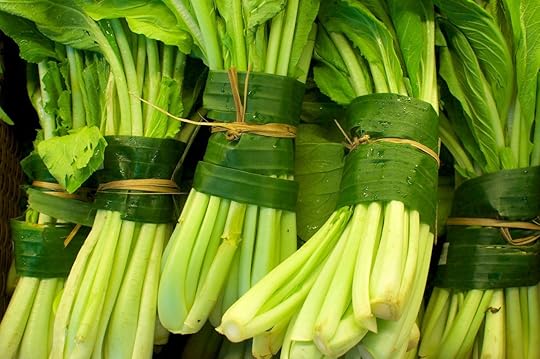
You’re used to hearing, “paper or plastic?” at the supermarket. In Asia, it might sound more like “paper, plastic, or banana leaves?” Following the lead of many markets in Thailand, supermarkets across Asia are using banana leaves instead of plastic as an alternative method of packaging food.
The concept was pioneered by the Rimping supermarket in Chiang Mai, Thailand, and immediately became popular with shoppers. Soon, Vietnamese supermarkets like Lotte Mart, Saigon Co.Op, and Big C caught wind of the idea, and started to mimic it.
The banana leaves are multi-purpose, able to be used for vegetables, fruits, and even fresh meat. The new sustainable food packaging might look strange at first, but local shoppers are supportive of the move. One Vietnamese shopper , “When I see vegetables wrapped in these beautiful banana leaves I’m more willing to buy in larger quantities. I think this initiative will help locals be more aware of protecting the environment.”
This initiative comes at an important time, as Vietnam currently ranks fourth in the world for the most plastic waste dumped into the ocean, with about 2,500 tons each day. Indeed, reducing single-use plastic bags in supermarkets is becoming a trend — not just in Asia, but around the world. Since banning ultra-thin plastic bags back in 2008, China has seen a staggering 66 percent drop in plastic bag use.
The introduction of banana leaves as a plastic replacement might be slow-going at first, but if it proves successful, we wouldn’t be surprised to see the initiative spread well beyond Asia. 
H/T: NextShark

More like this: The 8 most amazing, sustainable restaurants in the world
The post Banana leaves are replacing plastic packaging in Asian supermarkets appeared first on Matador Network.

Celebrity childhood homes

Before anyone was famous, they were just another kid growing up. They did the same mundane and silly kid stuff you did, playing tag in the street and getting forced to eat vegetables in the kitchen. It’s fun to imagine, but even cooler to see where it all happened. Childhood homes of celebrities are also far more accessible than grown-up homes, so much so that the regular people who now own them often rent them out on Airbnb. From playwrights to explorers to Golden Girls, here are seven childhood homes of the rich and famous you can spend the night in.
1. Yogi Berra’s house in the Hill neighborhood
St. Louis, Missouri
$60 per night

Photo: Airbnb
A nickel ain’t worth a dime anymore, but your inflated dollars go far in the boyhood home of baseball soothsayer Yogi Berra. The most quotable athlete of all time grew up in this house in St. Louis’ Little Italy — aka the Hill — one of the oldest and best Italian enclaves in America. For a mere $60 a night you can get déjà vu all over again when you sleep in one bedroom of the house. It may or may not have been Berra’s, but at least it may inspire some unconventional wisdom.
You can learn a lot just by watching, so walk down to the intersection of Wilson and Marconi avenues and educate yourself in bocce ball at Milo’s Tavern on its spacious bocce courts. Or stop into Joey B’s for some pizza, which you’ll need to cut into four pieces if you’re not hungry enough to eat six. The Hill is easy enough to navigate, but should you get lost there’s no need for a GPS. Just remember that when you get to a fork in the road, take it.
2. A desert oasis for Cameron Crowe fans
Palm Springs, California
$795 per night

Photo: Airbnb
Looking at the backyard pool at this four-bedroom Palm Springs ranch house, it’s hard not to imagine Phoebe Cates lustily stepping out of the water in a red bikini while The Cars play in the background. We can only guess it was the inspiration for that famous scene in Fast Times at Ridgemont High, since Cameron Crowe spent his formative years living in this home. If you’d like to actually use the pool, however, there is a $60 per day heating fee — though you’ll probably only need it heated from November to May.
The house is in the Movie Colony neighborhood, appropriate since its most famous son wrote Jerry Maguire, Say Anything, and Singles. It’s a short walk to Ruth Hardy Park and a not-painful drive to downtown and the Uptown Design District. The air conditioning inside works fantastically for those scorching Palm Springs summers, too. Though if you still feel the need to cool off, host MJ would prefer you don’t jump off the roof into the pool screaming “I am a golden god!!!”
3. An annex fit for a (short-reigning) queen
West Chiltington, England
$120 per night

Photo: Airbnb
Not that King Henry VIII was any prize himself when, at age 48, he married Anne of Cleaves. Dude had a 52-inch waist and spent most of his time nursing a jousting injury in his leg. But somehow he found his fourth wife so physically unattractive he was unable to consummate their marriage, and after just six months the marriage was invalidated. Anne was the shortest reigning of all Henry VIII’s wives, and slinked off into obscurity, head intact.
Before she was “the ugly wife,” Anne lived in this little stone annex, now done up with track lighting and modern appliances. The house sits on the south end of South Downs National Park, with convenient access to serene walking trails through the English countryside, a couple of pubs, and Nyetimber Vineyard. The momentary monarch wasn’t the only notable person to call this place home, either; from 1958 to 1976 actor Sir Norman Wisdom lived here.
4. Blanche’s original boudoir
Ardmore, Oklahoma
$230 per night

Photo: Airbnb
Admittedly, we have not ever been to Ardmore, Oklahoma. Lovely jumping-off point to the Arbuckle Mountains, yes. But its real draw is as the birthplace of Rue McClanahan, as anyone born before 1990 or who has ever marched in a Pride parade knows as sultry senior Blanche Devereaux from The Golden Girls. The lady who was 30 years ahead of her time grew up “17 telephone poles past the standpipe” in Ardmore, and just across the street you can rent the Golden Girls Guest House.
Sadly, hosts Lori and Jeddie Harrison have not done up the entire six-bedroom house in wicker rattan. Nor does any bedroom boast oversized palm-leaf wallpaper, and there is no scenic lanai. It is, however, tastefully decorated and filled with Lori’s professional photography, and at $230 a night is probably the best deal you’re getting for a large group in Ardmore. The hosts don’t go into much detail about what there is to do in Ardmore, likely assuming you and your crew will just hole up in there eating cheesecake and telling St. Olaf stories.
5. Tennessee Williams’ boyhood home
St. Louis, Missouri
$244 per night

Photo: Airbnb
Speaking of Blanches, the guy who created the original Blanche Dubois grew up in this luxury condo in St. Louis’ Central West End. Tennesee Williams, who, among other plays, wrote A Streetcar Named Desire, spent his formative years writing at the granite countertops and watching the flatscreen TVs in this two-bedroom beauty. Okay, probably not, since the giant house Williams’ grew up in was cut up and converted to condos a few years ago. But it’s still fun to imagine.
Once inside, you’ll have all the modern conveniences the Glass Menagerie author did not, including stainless steel appliances, a rainshower, and a jacuzzi tub. It’s located in Central West End, which, if you’re not familiar with St. Louis, is full of stately old homes, trendy bars, restaurants, and shopping locales. It’s also only about five minutes from downtown and close to the zoo, art museum, and science museum — all of which are free to visit.
6. A jazz legend’s house in New Orleans
New Orleans, Louisiana
$90 per night

Photo: Airbnb
It only seems appropriate when spending the night in America’s jazz hotbed to sleep in a place that inspired one of the best musicians of the early 20th century. Henry “Red” Allen — probably right behind Louis Armstrong on the list of greatest trumpet players of all time — grew up in this house in Algiers Point, only eight blocks from the Canal Street Ferry. That means you can spend your mornings soaking up your musical inspiration in this open, airy little house. Then head across the water to the French Quarter and see live jazz nightly.
You’ll be sleeping in one room near the back of the house, with its own bathroom boasting a rainfall shower and dual sinks. And you’ll have a nice view of host Topher’s expertly manicured backyard, too. This isn’t the only house with some serious jazz history in the neighborhood, either. Though they’re not on Airbnb, many other homes in the area are adorned with historic plaques explaining which artists lived there and their significance.
7. The first lands Captain Cook explored
Great Ayton, England
$70 per night

Photo: Airbnb
You might look at this modern brick bungalow and think, “Man, not only did brick masons in the 1700s make some amazingly uniform bricks, they also hold up!” As it’s billed as the “childhood home of Captain James Cook,” the clean, modern look of the exterior seems a little hard to believe. That’s because the actual cottage Cook grew up in was disassembled in the 1930s and now stands in Melbourne, Australia. So this home, though much nicer and newer, was not where he lived. But it still sits on the same land. Potato, potahto.
Once you get over the novelty of sleeping on such hallowed ground, you can get out and enjoy the stately English village of Great Ayton. It’s not far from the water, and sits amidst a number of other traditional villages, immersing you in the coastal English countryside. In town you can visit a number of Captain Cook historical sites including his old school — rebuilt with material from the original — which is now a museum, and a statue of Cook as a young boy. 

More like this: These 5 Airbnbs will make you feel like you’re living in ‘Game of Thrones’
The post You can spend the night in famous childhood homes appeared first on Matador Network.

History of the Manggahan Festival
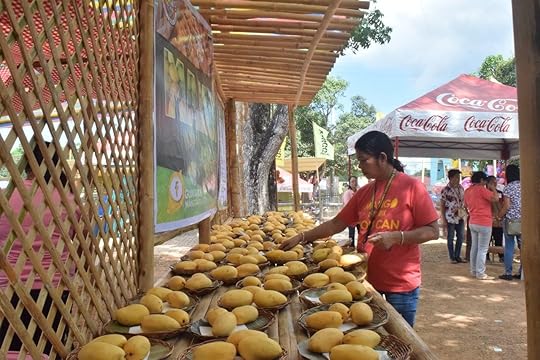
A line of women are gesticulating at what appears to be a mango bush during a performance at Manggahan, the mango festival held on Guimaras Island in the Philippines. Weaving back and forth, they thrust their hands skyward, as if begging for the rain to fall. A crank turns and the bush rises into a tree, exposing dangling fruit. The women and farmers in the crowd scramble out with long bamboo nets to scoop it up. It’s all just part of one performance on one day of what is surely the best mango festival in the world.
The traditions for the mango festival are well established. It all dates back to 1993 when then-governor Emily Lopez was looking for an event to mark the first birthday of Guimaras’ designation as an independent province. The independence day, May 22, coincides with the peak season for mangoes, Guimaras’ most famous crop. Today, Manggahan festivities last around two weeks. If anywhere is ripe for a mango festival, it’s the Philippines.
The Philippines exports more than $90 million worth of mangoes every year, making it one of the top 10 producers in the world. The most famous variety in the region is the fragrant carabao variety, named after the native water buffalo. Mangoes are the national fruit and are eaten in every conceivable way, including shakes, cakes, jams, salads, and smoothies.
Filipinos enjoy green, unripe mangoes as much as ripe ones. A popular combination is to dip slices of green mango into bagoong (fermented shrimp paste) for a shock of sour and salty flavor. Anecdotally, this is a common craving among pregnant Filipino women. One of these was my mother, who used to send my father out for green apples and salt — the closest substitute available in Saudi Arabia, where they were living at the time.

Photo: Guimaras Manggahan Festival/Facebook
Though every region is fiercely proud of its local mango variety, many admit that the carabao mangoes of Guimaras are the sweetest in the country, and perhaps the world. They’ve been served at the White House and Buckingham Palace, and Russia has a regular order of two tons of Guimaras mangoes a week — a drop in the ocean for a province that produced 11,500 tons last year. In April, agricultural secretary Emmanuel Piñol made a promotional trip to Germany and Belarus and proclaimed, “Our Honorary Consul there got a piece of Guimaras mango from me — he said, ‘I’m not going to taste other mangoes anymore.’”
Guimaras, an island with a population of around 175,000, has more than 250,000 mango trees. Less than 40 percent is used for large-scale commercial production, and a large number of trees are in the hands of independent producers. Growing mango trees is a tricky affair, and farmers must contend with fruit flies, weevils, and tempestuous weather that brings regular typhoons. To combat this, the island opened a nine-hectare National Mango Research and Development Center dedicated to the optimization of mango growing techniques. The island also imposes a strict embargo on outside mango products, even from other Philippine islands.

Photo: Emir Madrazo/Shutterstock
Guimarasnons (the people of Guimaras) have capitalized on mango fever with a broad range of products and events. Mango ketchup has been a big hit, and local restaurant The Pitstop is famous for mango and cashew pizza. The Guimaras Trappist Monastery once sold sticky mango cakes and biscuits to locals, then grew large enough to export them all over the country as the Trappist Monastic Food Products Company. All of the mango excitement peaks at the Manggahan Festival.

Photo: Guimaras Manggahan Festival/Facebook
Promotion for Manggahan begins early with warm-up events held in individual municipalities as far back as April. The festival officially launches in the town of San Miguel on May 11, with a 111 kilometer “Tour de Guimaras” bike race. Other events over the following 10 days include a Latin dance competition, a music festival, a pick-your-own mango event, and a male beauty contest (though sadly the “Mr. Guimaras” pageant isn’t specifically mango-themed). An “Eat All You Can” contest is held daily, where participants pay 110 Philippine pesos (around $2) for 30 minutes of unlimited mango eating. Participants can choose between ripe mangoes and green mangoes with bagoong.
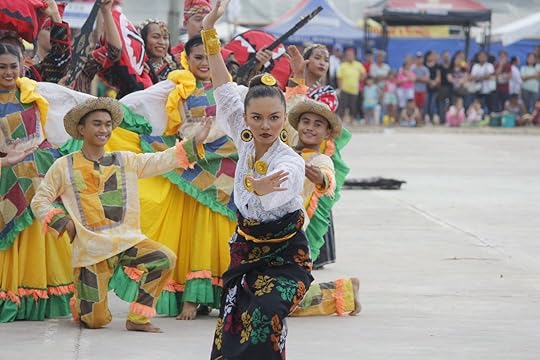
Photo: Guimaras Manggahan Festival/Facebook
The festival culminates on May 22 with the cultural competition, where “tribes” of high school students don extravagant yellow and green costumes and go head-to-head with music and dance performances. The winners of the competition progress to national festivals in Iloilo and Manila. From there, some go farther afield. In 2018, winning tribe Hubon Mangunguma was sent to New York to take part in Independence Day celebrations. The biggest party, however, is on the island.
At the performance with the gesticulating women, farmers eventually fill their baskets with fruit. They part to let the ladies through, each woman draped with yellow ribbons to look like fresh mango flesh. Front and center a globe emerges with the slogan, “Mangga ng Guimaras: matitikman na sa ibang bansa!” which translates to “Mangoes of Guimaras, tasted all over the world!” 

More like this: 11 Filipino foods you need to add to your eating bucket list
The post This Philippine island has mangoes so delicious, they have their own festival appeared first on Matador Network.

‘Do the Right Thing’ block party

Fans of Spike Lee’s 1989 film Do the Right Thing should mark June 30 on their calendars, and probably find a way to make it to New York City. Lee will be hosting a block party in honor of the 30th anniversary of his hit film, on the same block in the Bedford-Stuyvesant neighborhood where it was shot. Indeed, the film was so iconic that Stuyvesant Avenue, between Lexington and Quincy, has been renamed “Do the Right Thing Way.”
The movie is an exploration of racial tensions in a Brooklyn neighborhood during a single summer day. It has been celebrated as one of Lee’s best, receiving nominations for Best Supporting Actor for Danny Aiello, and Best Original Screenplay for Lee. Many also believe it deserved a Best Picture and Best Director nod.
So on June 30, wear your best retro ‘80s outfit, and be prepared to get hit with a healthy dose of nostalgia. Much like Lee’s annual Michael Jackson party, and a Prince-themed party he hosted back in 2017, the event will be free and open to the public. It begins at 12:00 PM and will last until roughly 6:00 PM.
In an interview with TheWrap, Lee said, “It’s going to be lit.” 
H/T: MS Events

More like this: The 6 best destinations for black travelers in 2019
The post Spike Lee to host ‘Do the Right Thing’ block party to celebrate the film’s 30th anniversary appeared first on Matador Network.

Pokémon-themed weddings in Japan

You can try to deny it, but you probably owned a Pokémon card or two as a child, and engaged in at least one argument over whether Charizard was better than Blastoise (sorry, Venusaur). Whether Pokémon was an integral part of your childhood, evoking a fond nostalgia, or something you adopted in your later years with the advent of Pokémon Go, you might be tempted by these Pokémon-themed weddings being offered in Japan.

Photo: Pokémon
Escrit is a Japanese company specializing in wedding ceremonies, and it’s partnering with The Pokémon Company to offer officially licensed Pokémon weddings. No, it’s not just a wedding thrown by Pokémon fanatics. It’s a professionally designed event, executed by the experts at The Pokémon Company’s licensing department.

Photo: Pokémon
As part of the wedding package, you’ll be given two Pikachu mascots. You can use them as ushers, ring bearers, a best man or woman, or just enthusiastic cheerleaders. But it doesn’t end there. Pokémon weddings have no time or use for traditional wedding food like filet mignon or vanilla sheet cake. Pikachu-branded food will definitely make an appearance, as will dessert trays featuring Poké Balls.

Photo: Pokémon
And if you were worried that your marriage certificate would be a standard, boring legal document, The Pokémon Company has that covered too, and will issue Pokémon-themed wedding certificates. 

Photo: Pokémon
H/T: Kotaku

More like this: The 7 most fascinating wedding traditions around the world
The post You can have a Pokémon-themed wedding in Japan appeared first on Matador Network.

Budapest boat capsizes, killing 7

On Wednesday night, a boat carrying over thirty South Korean tourists and two Hungarian crew members sank after it collided with another vessel on the Danube River. Seven have been rescued, seven were found dead, but 21 are still missing, and a search operation is still in progress.
Since the seven who were rescued were not wearing life jackets, it’s unlikely that those still missing are wearing them. Powerful currents on the river are believed to be one of the reasons for the accident, as heavy rainfall had made those currents stronger than usual. A criminal investigation has also been launched, as it’s unclear which vessel was responsible for the collision, or whether it could have been prevented.
The accident occurred right near Budapest’s most recognizable landmark — the parliament building — and involved a two-deck sightseeing boat called the Hableany. CCTV footage reveals that the Hableany collided with a larger tour boat, the Viking Sigyn, near the Margaret Bridge. According to police, the boat sank just seven seconds after the collision.
The cause is still unknown, but Imre Horvath, head of the Hungarian National Shipping Association, said he believes human error is to blame.
Although rescue efforts continue with boats, spotlights, divers, and radar, as time passes, the strong currents make it less likely that survivors will be found. For now, boat traffic has been halted on the Danube south of Budapest.
While still holding out hope that more survivors will be found in the river, the South Korean ministry has announced that counseling will be provided for families of the victims. 
H/T: BBC

More like this: 7 actually cool cruises that are nothing like the ones your parents take
The post Budapest tourist boat capsizes in the Danube, killing seven appeared first on Matador Network.

May 29, 2019
Best outdoors in Redding, California

“You see that down there?” Mason, my flight seeing pilot, said as we banked over Whiskeytown Lake. It was surrounded by what looked like desert mountains, an oasis of blue in a field of brown. “Last year, we had trees going all the way down to the waterline. Now it looks like Lake Mead.”
He was lamenting the destruction wrought by the Carr wildfires of 2018, which hit little Redding, California, and much of far-northern California harder than most people realized. The Whiskeytown recreation area was almost completely devastated, especially the emerald trees that once surrounded this mountain lake.
Despite the swaths of post-fire apocalypse, the view from the plane was incredible. Beyond Lake Shasta and its famous dam, we saw snow-covered Mount Shasta towering in the distance with the Cascade Mountains to the east and Lassen Peak further off. Deep green mountains filled the landscape between our plane and the icy peaks, with the Sacramento River running a shiny blue through it all.

Photo: Visit Redding
In a state full of wilderness traffic jams, where a weekend “escape” to Yosemite or Mendocino has you fighting thousands of cars and tens of thousands of people, the region around Redding still feels remote. It’s a place where you can drive a two-lane highway flanked by firs and redwoods and not see a car for miles. A place where, on a slow day, you can be one of only seven people in a national park. And a place where locals still treat tourists like guests, instead of a nuisance.
Rainforests and waterfalls abound like a temperate Caribbean island.
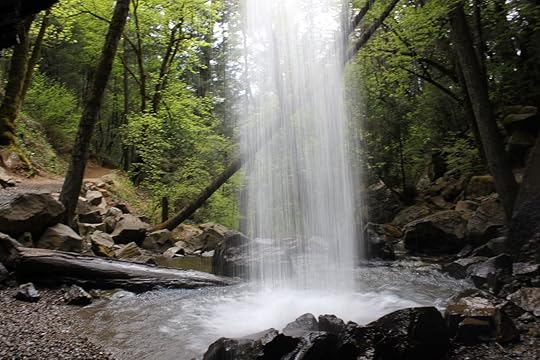
Photo: Visit Redding
Nobody’s confusing Redding with Dominica, but the abundance of easily accessible waterfalls is something I’d only seen in the Caribbean. The best way to see them is exploring the waterfall loop, an admittedly lengthy drive past 13 waterfalls within a short walk of your car. It’s almost impossible to do them all in one day, but if you pick a few, it’s a magical way to spend the afternoon.
About 50 miles north on I-5 in Dunsmuir, you’ll find Hedge Creek Falls. A 0.7-mile walk takes you down through bright green moss and thick ferns to the falls, complete with a path behind them for viewing from all angles.
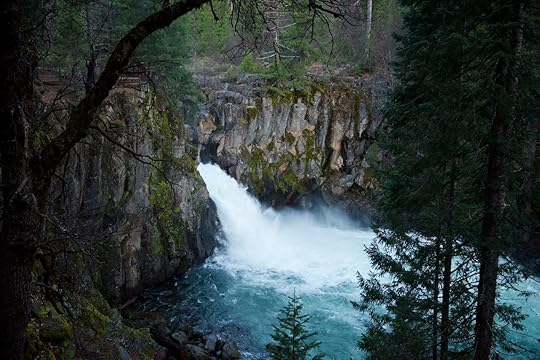
Photo: Visit Redding
The loop also includes McCloud River waterfalls, a series of three falls along the river. You can walk between them on an easy waterside trail, where the powerful sound of the cascading water makes the experience almost meditative if you can keep your hands off your phone.
Another hour brings you to perhaps the most impressive falls in the loop at McArthur-Burney Falls, which sits on the side of the Cascade Range between Mt. Shasta and Lassen Peak. The 129-foot falls see nearly 100 million gallons of water per day, and though their power is impressive, the bright blue pool at the base reflecting the colors of the canyon is downright mesmerizing.
A volcanic wonderland with creepy underground attractions
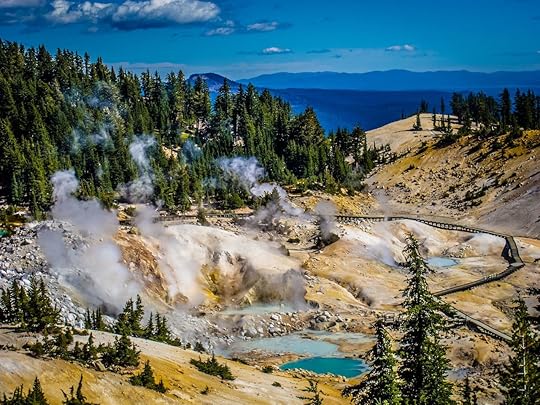
Photo: Visit Redding
Lassen Volcanic National Park, about an hour’s drive from Redding on Highway 44, is the only place on earth to host all four types of volcanoes (shield, plug dome, cinder cone, and composite). Despite its volcanic diversity; vast, barren lava fields; and geothermal springs, it receives just over half a million visitors a year. On the day I went, I was one of seven people there.
Driving through you’ll go from alpine wilderness to a loosely vegetated surface of the moon to glacial paradise in the span of an hour. The only other place like it I’ve seen was Iceland, just without the tour buses.
On the road between McArthur-Burney Falls and Lassen, I also happened upon one of California’s great roadside attractions in the Subway Cave. What might reasonably be called the creepiest natural attraction in America, this natural lava tube just looks like a perfectly carved subway tunnel, with a gravel-free floor and smooth ceilings. The first couple hundred yards seem perfectly fine, until literally all the light disappears. Without a flashlight, you’re suddenly surrounded by darkness and silence, with no sense of which way you got in or which way to escape.
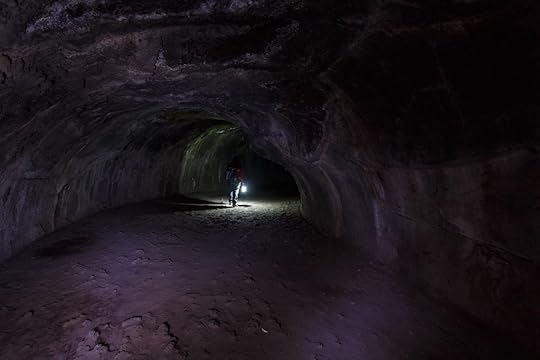
Photo: Pete Niesen/Shutterstock
If you do have a flashlight, little podiums with maps and information on the cave act like tour guides, and if you want a little slice of serenity, turn your light off and just stand in the abyss. Though the tunnel stretches only about 1,300 feet, if you don’t know how long it is, you may think you’ll be stuck there forever. But don’t worry, it only takes fewer than 10 minutes to walk through.
Getting out on the water is easy.

Photo: Visit Redding
Banking back over Lake Shasta, Mason the pilot pointed out a white marina jutting out into a pale blue lake.
“Next weekend, that’s gonna be filled with kids on houseboats,” he said, referring to the upcoming Memorial Day holiday. “I don’t know how a college kid affords $25,000 a week for a houseboat, but hey, maybe they’re just dipping into that trust fund.”
We are flying over Lake Shasta which, for years, has been a sort of Havasu North.
But when it’s not full of partying houseboats, Lake Shasta offers kayaking, paddleboarding, and swimming in the reflection of snow-capped mountains. You can take dinner cruises across the lake to enjoy it by sunset or all-day tours that include visits to the mind-bending caverns nearby.

Photo: Visit Redding
The other big aquatic draw in Redding is fishing. Along over 40 miles of the Sacramento River, you’ll find rainbow trout swimming to Lake Shasta, and even in-season you won’t have problems finding a spot to cast your line. But if you want even fewer people, some of the best fishing in decades can be found along the McLoud, Pit, and Upper Sacramento rivers with record water levels this year.
Destination mountain biking for every skill level

Photo: Visit Redding
The mayor was smoking me on the trails.
Brent Weaver, former Redding mayor and founder of the Mayor’s Mountain Bike Challenge, was riding ahead of me on the Lower Sacramento Ditch Trail, a soft beginner’s trail cruising along mountainsides with views into a deep green valley. He navigated the switchbacks on instinct, politely waiting for me to figure them out before speeding ahead. We stopped at a lookout point to survey the damage from last year’s fires.
“I was on a family vacation in Alberta, and they have CNN on and I see ‘Redding; California,’ on the bottom of the screen with all these shots of the fires,” he says as a blacked-out hill stands behind him. “I immediately called and asked if I should come back and they told me ‘leave your kids there.’”
The horrors of the fires are over now, and Weaver, along with others in Redding, is determined to get news focused back to the city’s mountain biking. With 225 miles of trials in a 15-mile radius, it’s an easy sell.
“We have everything from beginner to intermediate trails that go along our rivers, through our mountain valleys,” he says as he powers ahead. “Everything from expert trials with incredible elevation gains and drops. There’s a sense of pride when somebody from out of town comes to bike our trails.”
The city is a friendly, welcoming jumping-off point for upstate’s wilderness.

Photo: Visit Redding
Redding is not a culinary destination, necessarily, but it still has enough fantastic food and things to do once you’re off the mountain.
Northern California breweries are almost a legal requirement in any city. Redding doesn’t disappoint with Woody’s, a brewpub with better beer than I’ve found at bigger names in this state. Final Draft Brewing downtown is also solid, and perfect for a drink after dinner.
Tacos are another California staple, and if you’re looking for the kind of cheap, authentic, shares-a-parking-lot-with-a-Chevron-station tacos that make the state famous, go a little past Woody’s to La Cocina del Chuy.
For higher-end stuff, go for cocktails and flatbreads at Mosaic, in the shiny new riverside Sheraton by the landmark Sundial Bridge. Or hit the Market Street Steakhouse, which grilled up the best small-town filet mignon I’ve ever had.
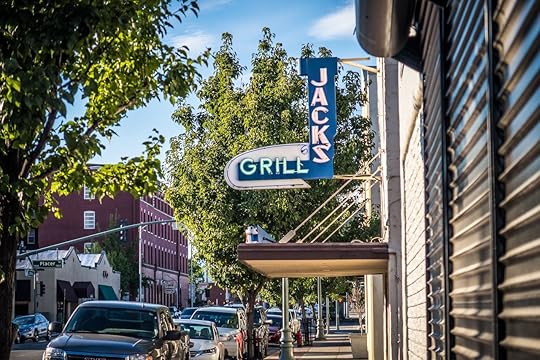
Photo: Visit Redding
Locals, however, told me Jack’s Grill — the institution dive bar — had better steaks. Whether that’s true or not, Jack’s is worth popping in, if for no other reason than to share the bar with colorful, longtime locals. Because what made Redding feel so relaxing and natural was how the people treated me as a visitor.
My first night in town I had a bartender and three Market Street Steakhouse regulars ask me extensively about myself, then give me a slew of recommendations the tourism bureau hadn’t.
I met another Redding native who invited me to a house party where people were watching Jaws from a swimming pool. They were eager to share all the things they thought made their city great and enthusiastic to give me details on every question I asked. It was a welcomed departure for the sort of us vs. them attitude you sometimes find in California’s smaller outdoors’ destinations when tourists come to town.
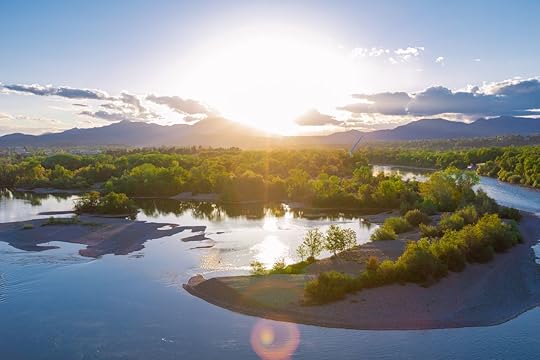
Photo: Visit Redding
Those same locals warned me that while they were excited at the prospect of more visitors, some longtime Redding folks were not. And when that fancy new Sheraton opened on the river, they saw their quiet little corner of California slipping away.
That may be a bit dramatic — as of publication only San Francisco and LA have flights here — but as people look for new areas to explore, Redding may not always be the welcoming gateway it is now. But for now, even after the fires, it has some of the best wilderness in North America and may just be California’s last hidden outdoor getaway. 

More like this: How to have the perfect outdoor weekend in Santa Barbara
The post Even after the fires, Redding is California’s last great undiscovered outdoors destination appeared first on Matador Network.

Matador Network's Blog
- Matador Network's profile
- 6 followers



